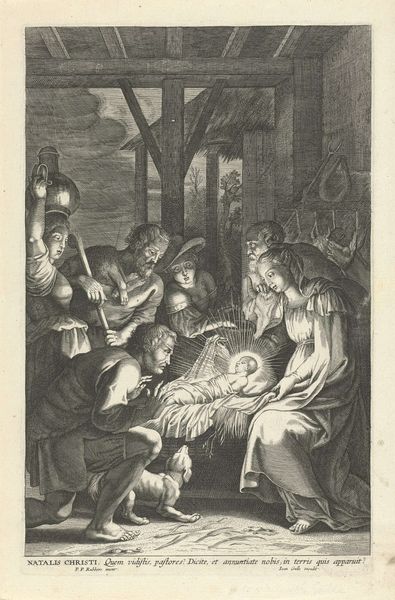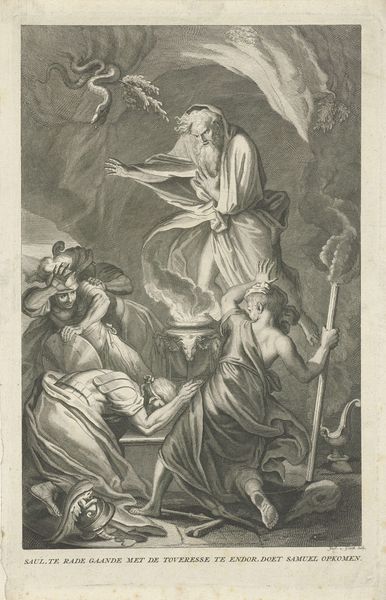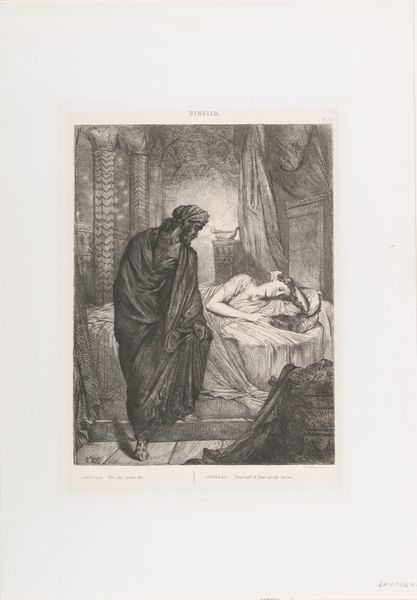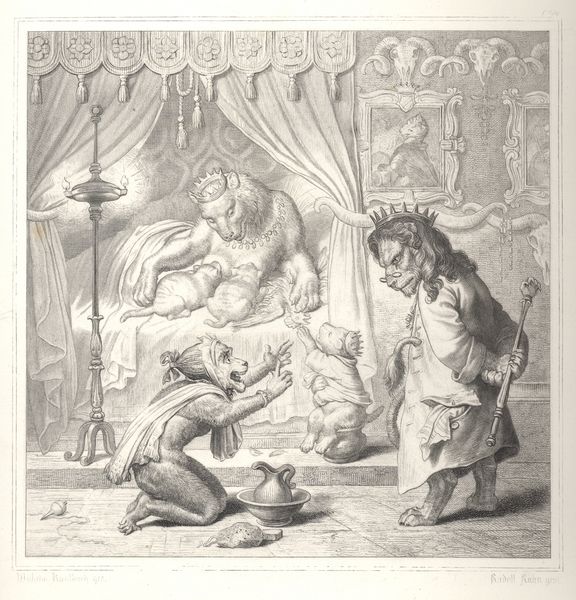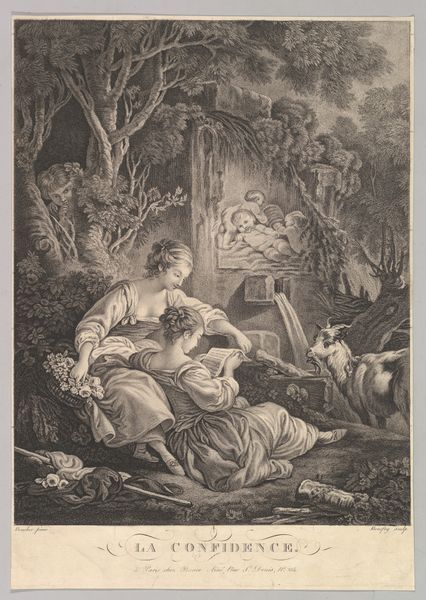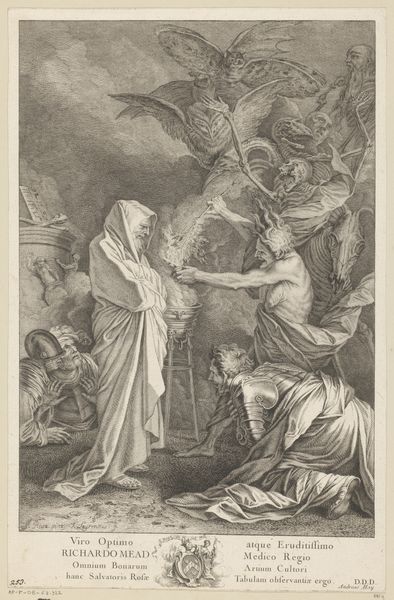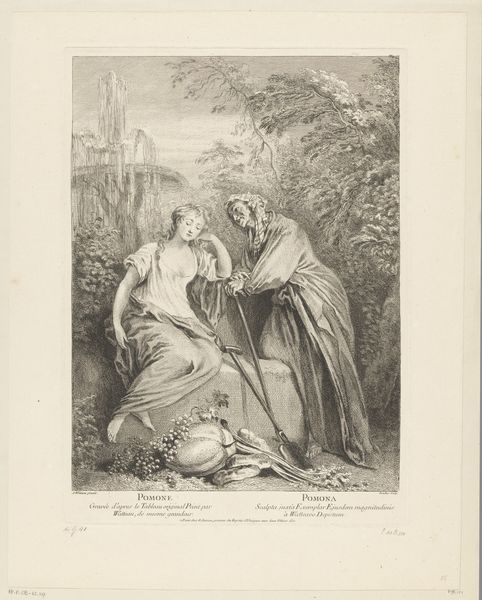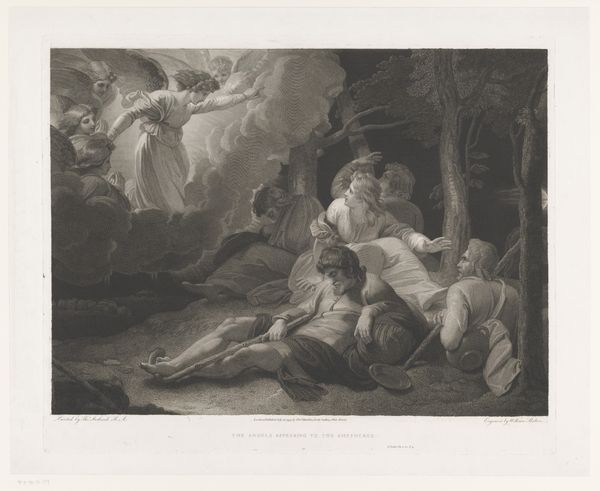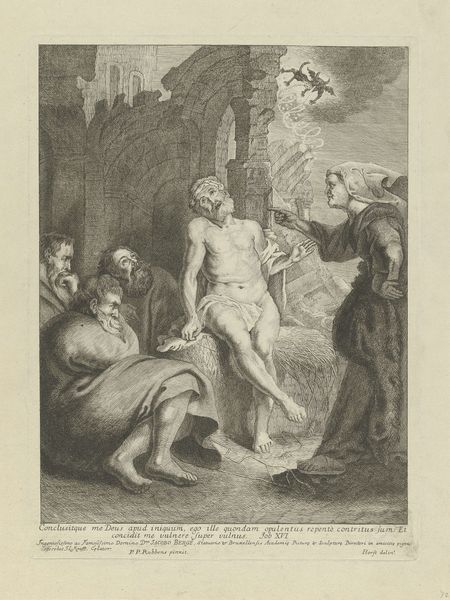
Arveprins Frederik vækker Fama. Allegori over mindesmærkerne på Jægerspris 1784
0:00
0:00
print, engraving
#
neoclacissism
#
allegory
# print
#
figuration
#
history-painting
#
engraving
Dimensions: 502 mm (height) x 360 mm (width) (plademaal)
Curator: This engraving from 1784, titled "Arveprins Frederik v\u00e6kker Fama. Allegori over mindesm\u00e6rkerne p\u00e5 J\u00e6gerspris," by Georg Haas, presents a neoclassical scene full of symbolism. The work, now in the collection of the SMK, employs meticulous lines and shading to convey a message beyond the literal depiction. Editor: It's striking how still everything is despite the action being depicted. The light source isolates the figures, lending a performative theatricality to the scene, like players on a stage. Curator: The engraving process itself is important here. Haas is replicating forms; mass producing and distributing imagery linked to power. Think of the skilled labour involved in translating images from other mediums into reproducible print, and then distributing it across the landscape. Editor: Precisely. The composition frames Prince Frederick as a figure of enlightenment, literally awakening Fame – the woman reclining with a trumpet, symbolizing renown. The entire image works to associate him with notions of civic virtue, using classical allegories to convey this. But who had access to this? Was it solely meant for elite consumption? Curator: Certainly, considering the cost and the target audience would have been affluent and educated citizens and those connected with the court. The choice of allegory signals not just an admiration for the past, but an active effort to tie the Danish monarchy to perceived classical ideals. Editor: Which of course has implications. This engraving functions as propaganda. The deliberate crafting of image, from Frederick's attire to the theatrical lighting, served to project a carefully curated image of the monarchy and its connection to national pride. It becomes a commodity promoting a very particular brand of national identity. Curator: The monument architecture in the background, shrouded in mist, supports this intended national narrative—linking it to enduring virtues. And of course, an engraver like Haas needs to be aware of audience expectation in order to fulfill this goal, effectively performing a service of image dissemination and control. Editor: Absolutely. Examining the print’s intended reception adds further nuance. Knowing how prints circulated sheds light on evolving aesthetic preferences but, crucially, how this form participates in legitimizing particular figures and narratives. It makes you question, which voices remain silenced within this narrative? Curator: This engraving reflects how technical processes of artistic creation helped establish political statements through aesthetics in eighteenth-century Denmark. Editor: It's a potent reminder how seemingly benign artwork operates to uphold certain narratives and societal orders, reminding us of the need for continual examination of our historical representations.
Comments
No comments
Be the first to comment and join the conversation on the ultimate creative platform.

